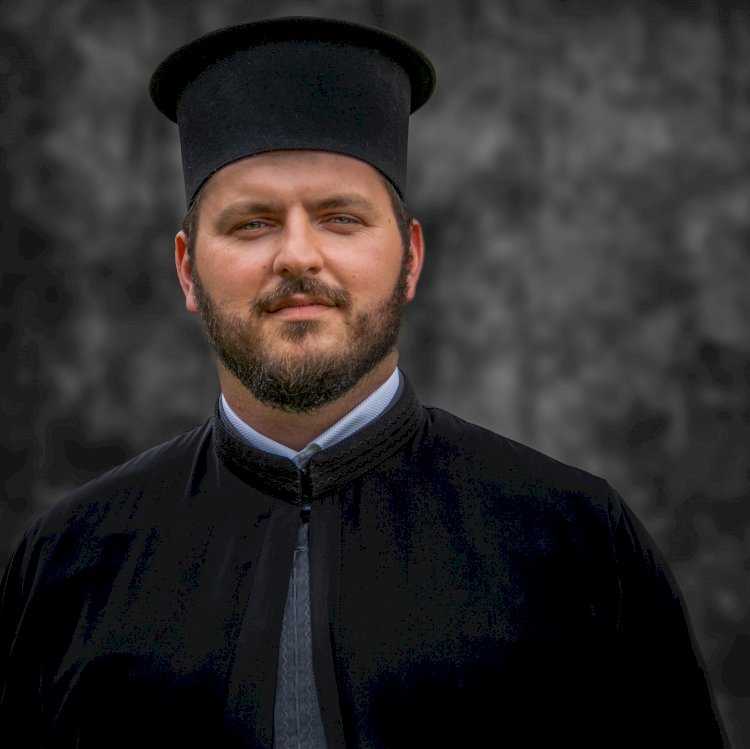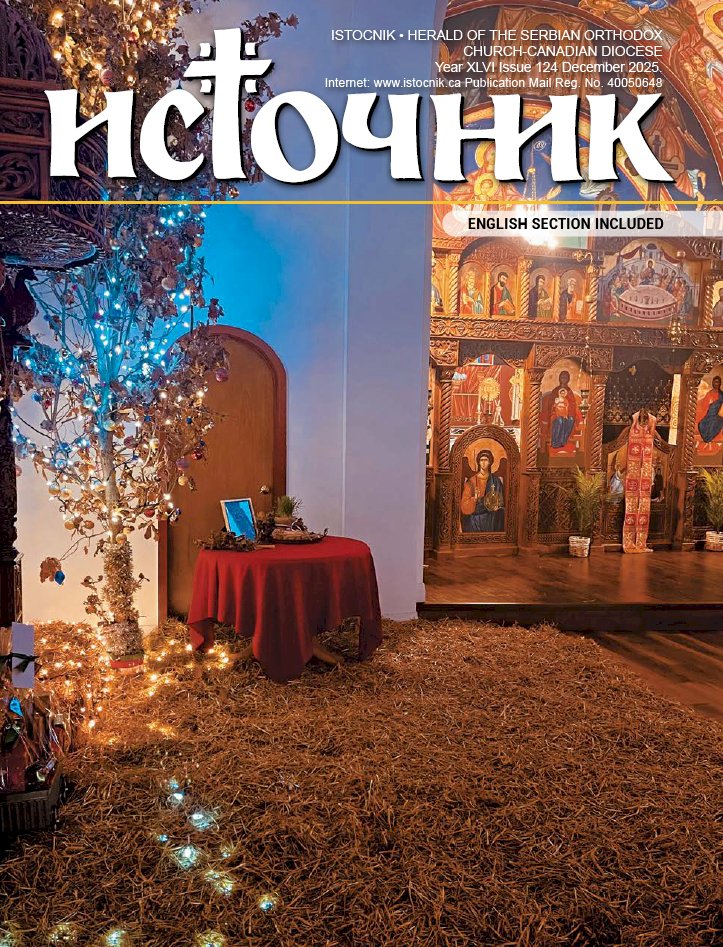Gracanica Church, Windsor

Gracanica Church, Windsor
Address: 1960 Meldrum Road, Windsor, Ontario, N8E 4E2
Website: www.gracanica.ca
Phone number: 519 945 8764

Priest: Fr. Milorad Delic
Phone number: 519 257 0195
Email: milorad.delic@gmail.com
Fr. Milorad Delic was born in Odzaci (Backa, Serbia) on December 24, 1989, as the eldest child (of eight children – seven boys and one girl) of father Tomislav and mother Gordana. He completed elementary school in Backi Brestovac in 2005, and with the blessing of His Grace Bishop of Backa Irinej, he began studying at the Theological Seminary of Sts. Cyril and Methodius in Nis. After completing his studies at the seminary in 2009, he continued his education at the Orthodox Theological Faculty in Belgrade. During his studies, he was the main singer of the Saint Archangel Michael Cathedral Church in Belgrade until his graduation in 2015. In 2017, he married Stanislava Sevic and came to Canada in 2018. Father Milorad and popadija Stanislava were blessed with the birth of their first son, Maksim, in 2018, then in 2024 they were blessed with the birth of their second son, Simon. In Canada, he was ordained a deacon and then a priest by His Grace Bishop of Canada Dr. Mitrofan. From January 2018 to August 20, 2024, he served as parish priest at Saint George Church in Niagara Falls. That period in the parish was both spiritually and materially significant for the community. The church was filled with the active participation of youth in the Divine Liturgy as well as in other activities for the improvement of the parish community. In 2023, very significant work was also carried out on the church and on the large property that the community owns. That same year, the parish of Saint Ilija merged with the parish of Saint George so that, for the first time since 1963, all three parishes in Niagara Falls (the parishes of Saint George, Saint Michael the Archangel, and Saint Ilija) celebrated the Resurrection of Christ together.
History
written by: Djordje Velickovic
Community
The roots of our Serbian community in Windsor and Essex County date back to the early years of the last century. At that time, there were very few immigrants from the homeland, mostly from areas still under the occupation of Austria-Hungary or the remnants of the Ottoman Empire. These early settlers settled in the areas around Detroit and Windsor. Many more Serbs came to North America after World War I, and especially after World War II. Today's Serbian community has also grown significantly during the recent collapse and breakup of communist Yugoslavia. Canada has once again become a homeland for many people who were expelled from their homes, and our community has gained a significant number of Serbian people.
Church and School Congregation organization
For the community to begin its organized work, it first needed a place to meet. For this reason, the first house on Edna Street was purchased in the late thirties. For religious needs and Orthodox ceremonies, either the Russian or Ukrainian Church was used. As the community slowly grew, the house was sold and an empty lot was purchased from the city of Windsor on Drouillard Road. As early as 1940, the new hall was consecrated and it became a permanent home for social needs, where religious ceremonies were also performed. December 29, 1946, marks the most significant date in the history of parish life in Windsor. On that date, the founding assembly was held and the legal organization of the Congregation began. An Executive Committee was immediately elected, which began work on establishing legal acts, enrolling new members, as well as on drafts and plans for a better future. The main goal of this organization of the Congregation was to preserve its rich Serbian tradition and its Orthodox faith in its new homeland of Canada. Ownership of the hall on Drouillard Road was transferred to the membership of the Congregation in 1948. It was a place for the community's social and religious needs. Already in 1949, the Congregation was able to hire a permanent priest and in 1952, on the corner of Meldrum and Tecumseh Streets, the beautiful Gracanica Church was erected. As the community continued to grow, so did the need for a larger space for cultural, educational, entertainment and recreational needs. On the parish property on the east side of the city, 6770 Tecumseh Street, members of the Congregation built a new hall, which was completed in 1967. As the Congregation continued to grow, they slowly added and expanded recreational facilities. The largest undertaking, a significant expansion of the then hall, was completed in 1987. The expanded facilities in today's Serbian Centre house a museum, a library, a large and small hall, eight classrooms, offices, a picnic area, a small soccer field, and a large concrete terrace. The Congregation has grown from about 80 at the beginning to nearly 400 members and families in 2013.
Church
Since the Serbian tradition and faith are inseparable, the hall on Drouillard Road was used for all social and religious needs. As there was no permanent parish priest, a priest from Detroit was brought in when needed. As the goal from the very beginning was to have our own church and our own priest, contributions for the construction of a new church began being collected. With the full support of the Congregation membership, the fundraising bore fruit and in 1949 a plot of land was purchased on the corner of Meldrum and Tecumseh Streets. A replica of the 13th century Gracanica Monastery in Kosovo was completed in record time and consecrated in 1952. The church, in addition to being unique and immediately striking in its architectural style, is adorned with exceptional works of art. Let us mention just a few of them: the monumental iconostasis that separates the altar from the main church was installed in 1968. It was made according to the design of a famous professor of church and religious art from the homeland. The iconostasis is over ten metres high with very intricate details carved from walnut wood. It was delivered from our homeland in pieces and assembled in the church itself. Our frescoes were completed in 1978 by an art studio from Greece. The stained glass windows began to be installed in 1956, but were not completed until the 50th anniversary of the parish in 1996. We are also proud of our three bells, which were cast in England and installed in 1963. The huge chandelier, one of only two in North America, that hangs from the main dome of the church, was installed in 1958. The church is a municipally designated cultural heritage monument in Ontario and, according to a quote from the Windsor Star, is "one of the largest concentrations of art in these areas."





















